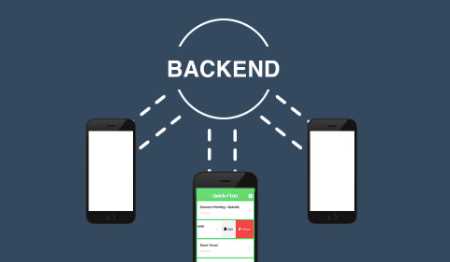In the world of mobile app development, seamless integration with web services is essential for creating dynamic and data-driven applications. Backend integration enables mobile apps to communicate with web servers, access resources, and retrieve real-time data. This blog explores the importance of backend integration in mobile development and provides insights into the process of connecting mobile apps to web services.
Why Backend Integration Matters:
Backend integration plays a crucial role in mobile app development for several reasons:
Access to Data: Mobile apps often require access to data stored on remote servers. Backend integration enables apps to fetch and display information in real-time, ensuring users have the latest data at their fingertips.
Scalability: By connecting mobile apps to web services, developers can leverage the power of cloud computing and scalable infrastructure. This allows apps to handle increased user loads and deliver a consistent experience, even during peak usage periods.
Enhanced Functionality: Backend integration enables mobile apps to leverage advanced functionalities provided by web services. This includes features such as user authentication, push notifications, file storage, social media integration, and more.
Offline Capabilities: Backend integration allows mobile apps to sync data with servers, providing offline capabilities. Users can continue using the app and performing actions, such as composing emails or creating documents, even without an active internet connection. Once connected, the app can sync the data with the server.
Connecting Mobile Apps to Web Services:
The process of connecting mobile apps to web services involves the following steps:
Define API Endpoints: Identify the API endpoints provided by the web service that your mobile app needs to interact with. These endpoints represent different functionalities or resources, such as retrieving user data, submitting forms, or retrieving real-time updates.
Choose Integration Approach: Select an integration approach based on the requirements of your mobile app. Common methods include using RESTful APIs, SOAP (Simple Object Access Protocol), or GraphQL. RESTful APIs are widely used due to their simplicity, scalability, and support for various programming languages.
Implement HTTP Requests: Use the appropriate libraries or frameworks provided by the mobile development platform to send HTTP requests to the web service's API endpoints. These requests can include data parameters, headers, and authentication tokens, depending on the specific requirements of the web service.
Handle Responses: Once the web service processes the request, it will return a response. Handle the response in the mobile app by parsing the data and extracting the relevant information. Depending on the response, the app can display the data, update the UI, or perform additional actions.
Implement Authentication: If the web service requires authentication, implement the necessary authentication mechanism in the mobile app. This can involve integrating OAuth, JWT (JSON Web Tokens), or other authentication protocols to securely authenticate users and authorize access to protected resources.
Best Practices for Backend Integration in Mobile Development:
To ensure a successful backend integration in mobile development, consider the following best practices:
Security: Implement secure communication protocols, such as HTTPS, to protect data transmitted between the mobile app and the web service. Use secure authentication mechanisms and encrypt sensitive data to prevent unauthorized access.
Error Handling: Implement proper error handling and provide meaningful error messages to users when requests fail or encounter issues. This helps users understand and resolve any problems that may arise during communication with the backend.
Performance Optimization: Optimize network requests by minimizing unnecessary data transfers and leveraging caching mechanisms when appropriate. Use techniques like pagination and lazy loading to fetch data efficiently and improve app performance.
Testing and Monitoring: Thoroughly test the integration between the mobile app and the backend web services to identify and address any potential issues. Monitor the app's performance and track API usage to detect anomalies or areas that require optimization.
Conclusion:
Backend integration is a critical aspect of mobile app development, enabling apps to connect with web services, access data, and deliver enhanced functionality to users. By following the outlined steps and best practices, developers can seamlessly connect mobile apps to web services, ensuring real-time data updates, scalability, and offline capabilities. Effective backend integration empowers mobile apps to provide a robust and engaging user experience in today's interconnected digital landscape.




Leave Comment